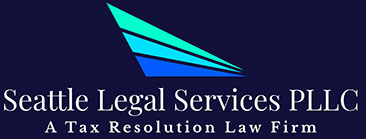Responding to IRS Letter 1153 Proposed Trust Fund Recovery Assessment

If you run a business that has employees, chances are good that you’re required to withhold a portion of your employees’ paychecks each pay period for certain taxes. You’ll then hold that money in a trust fund until you send it to the IRS. These withheld “trust fund” taxes generally include excise taxes, Medicare taxes, Social Security taxes, and income taxes. A failure by the employer to collect and remit these taxes could result in a trust fund recovery penalty assessment.
However, this penalty doesn’t just go against the business or the employer. There are a number of people who could be held personally liable. When the IRS attempts to collect this penalty, it will usually do so by sending Letter 1153 to the person or group of people they feel are personally responsible. If you’ve received this letter, this guide walks you through what to expect and how to respond.
What Is IRS Letter 1153 and What Does it Mean?
IRS Letter 1153 is a document you’ll receive from the IRS that lets you know that the IRS has been unable to collect trust fund taxes from your business and plans to assess the trust fund recovery penalty (TFRP) against you. This last part is notable because even though your business is required to collect and send these taxes to the IRS, you could be individually liable for the penalty, not the business.
An individual is personally liable for the TFRP if the IRS deems them to be the one responsible for the IRS not receiving the payroll and other trust fund taxes they’re supposed to get. In many cases, the IRS won’t know who this person is before sending Letter 1153 so they’ll first complete a Form 4180 interview.
The IRS uses Form 4180 to ask questions to figure out who had authority and access to the information, paperwork, and money necessary to comply with the payroll tax obligations.
In addition to notifying you about your possible liability for the TFRP, Letter 1153 also outlines what you can do if you agree or disagree with the penalty, most notably how to appeal the IRS’ TFRP assessment.
How Much Is the Trust Fund Recovery Penalty?
The TFRP is one of the larger civil tax penalties in that it’s equal to 100% of the underlying unpaid tax amount plus any applicable interest. S,o if the unpaid tax amount is $10,000, then the TFRP is $10,000, plus interest. This means the total amount owed to the IRS would be $20,000, plus interest.
That said, although the IRS can hold a variety of people personally liable for the penalty. Only the corporation, the partners in a general partnership, or sole prop owners can be held responsible for the payroll tax.
For example, if you’re the owner of a company and the IRS proposes a TFRP against you, you may be liable for both the penalty and the unpaid payroll taxes. In contrast, say that you’re an accountant employed by the company and the IRS proposes a TFRP against you, then, you can only be liable for the penalty, not the taxes as well.
Who Pays the TFRP Assessment?
As mentioned earlier, the “person responsible” for collecting and remitting the trust fund taxes will be the one who has to pay the TFRP. This is a person who must collect, account for, and/or pay the payroll taxes but willfully chooses not to. The key here is that the failure must be willful, meaning a person can’t be personally liable to pay the penalty unless they knew about their obligation and made a conscious decision to ignore it.
More than one person could be considered “responsible” for TFRP purposes and a person could be liable for the TFRP even if they were “following orders” from their boss to not pay the necessary taxes. The following are major factors when deciding if someone is responsible for the TFRP:
- Controlling financial matters of the business.
- Holding corporate office.
- Exercising authority to disburse business funds.
- Deciding who the business should hire or fire.
- Owning company stock in the business.
Given these factors, the majority of individuals liable for TFRPs end up being business owners or corporate officers. However, payroll service providers and basic employees can theoretically be liable for the trust fund recovery penalty in certain situations.
What to Do After Receiving the 1153 IRS Letter
The first thing you should do is figure out what happened that caused the IRS to believe you’re responsible for the TFRP. If you decided to forgo your payroll tax responsibility, then that’s one thing. But if you have a third-party payment processing company or someone in payroll who’s not doing their job correctly, you need to find that out as soon as possible.
Assuming you determine that the IRS is correct in assessing this penalty against you, then try to pay the penalty in full sooner rather than later to avoid having to pay more because of interest. If you can’t pay the full penalty with a lump sum payment, then see if you can apply for a payment plan, partial payment installment agreement, or offer in compromise. If you agree with the penalty and Letter 1153, you’ll also need to sign Form 2751, which will be sent along with Letter 1153.
However, don’t sign this form unless you’re confident that the IRS is correct and you’re responsible for the penalty. Signing Form 2751 is the same as admitting liability and after you sign it, basically the only way to take back this admission is to argue that you were coerced into signing Form 2751. So if you have any doubt about your liability for the TFRP, don’t sign it until you first talk to a tax professional.
If you disagree with the IRS about the TFRP, you have three options. First, you can informally protest the TFRP by contacting the IRS representative listed at the top of the first page of Letter 1153 and explaining why you disagree. If you choose this option, you need to act quickly, as you must do so within 10 days from the date of the letter.
Second, you can file an appeal. You have 60 days (75 days if it was addressed to you outside the United States) from the date of the letter to do this. Letter 1153 will have information explaining this appeals process, and the process could differ based on the amount of the penalty.
The appeals process normally involves mailing a written explanation as to why you believe you shouldn’t have to pay the penalty. You’ll send this request to the IRS representative listed at the top of the first page of Letter 1153.
If the amount of the penalty is large enough, you’ll have to declare, under penalty of perjury, that the information you’ve provided is true, correct, and complete to the best of your knowledge. If you’re thinking about appealing a penalty that requires this more formal appeals process, it’s strongly recommended you consult with a tax professional to discuss your options and the best approach to take with the IRS.
Third, you can pay the penalty but not sign Form 2751. Then, you submit IRS Form 843, Claim for Refund, and Request for Abatement to ask the IRS to refund you the money you sent for the penalty. However, the chances of the IRS agreeing to do this are slim, and you’ll likely have to sue the IRS to get the money back. Given the time and money involved in this process, you’ll probably have better luck contesting the TFRP by filing an appeal.
What Happens If You Ignore Letter 1153 from the IRS?
Nothing good will happen. If the IRS is wrong to try and impose this penalty against you, you’re still liable for it and any added charges or interest until you can explain to the IRS why you don’t have to pay the penalty. As long as the IRS believes you should pay the TFRP and you ignore Letter 1153, the IRS will escalate its collection activities against you such that you can expect tax liens and levies that lead to the IRS taking your property. If the IRS is wrong, don’t wait until things escalate to correct the IRS.
Preventing a TFRP Assessment
Here are a few tips to help avoid a trust fund recovery penalty being assessed against you:
- Keep good payroll records. This means implementing a payroll management system or hiring an outside vendor to stay on top of the payroll tax collection and remitting responsibilities for your business.
- Don’t be afraid to ask for outside help. Whether it’s consulting with a CPA, tax attorney, or third-party payroll provider, they can examine your system of paying your employees and see if any current or potential issues could lead to a TFRP.
- Avoid getting into financial trouble with your business. When someone doesn’t collect and pay the necessary payroll taxes to the IRS, it’s sometimes because they don’t have enough money to pay all of the business’ obligations. So the responsible person feels like not paying the IRS is better than not paying their suppliers or employees and is therefore, “the lesser of two evils.” While this is an understandable sentiment, these situations can be avoided by having a better understanding of cash flows and financial management of the business.
Trust Fund Recovery Penalty Assessment FAQ
Is there a statute of limitations on TFRP assessments?
Yes, as the IRS has three years to assess a penalty, with the clock usually starting on April 15 of the year after the taxes were due. Once the IRS assesses a penalty, it has 10 years to collect it.
How do I prove to the IRS that I’m not a “responsible person” within the TFRP context?
If you want to argue you’re not a responsible person, then you’ll need to explain that you didn’t have significant control over your business’ finances. You will be deemed to have significant control if you have significant or exclusive control over which bills get paid and when. An alternative approach is to concede that you’re a responsible person for TFRP purposes, but that you didn’t act willfully.
Can I discharge a TFRP assessment in bankruptcy?
No, trust fund recovery penalties are not typically dischargeable in bankruptcy.
Can I use a payment plan to pay off the TFRP assessment over time?
Yes, the IRS is willing to discuss your options and find an installment agreement or payment plan that you can afford.
Can the IRS take my home or car to satisfy the TFRP obligation?
Yes, but they probably won’t, given how making someone homeless or unable to drive to work will usually make it harder for that person to pay off any debts to the IRS. What’s more likely is that the IRS will place a tax lien on your property and/or garnish your wages or levy your bank account.
Need Help Dealing with an IRS Letter 1153?
The trust fund recovery penalty is a big deal, especially because it can often be such a large amount that most individuals personally liable for it will struggle to pay it off. And the question of who is personally responsible for paying this penalty often won’t have a clear answer. Therefore, if you receive Letter 1153 from the IRS, don’t panic, as the IRS might not be sending Letter 1153 to the right person, or you might not be responsible for 100% of the TFRP.
But to make these arguments to the IRS, you’ll probably need some help and that’s where Seattle Legal Services, PLLC comes in. We have experience handling TFRP assessment cases and responding to 1153 letters from the IRS. You can reach us online or by calling 425-428-5262.
